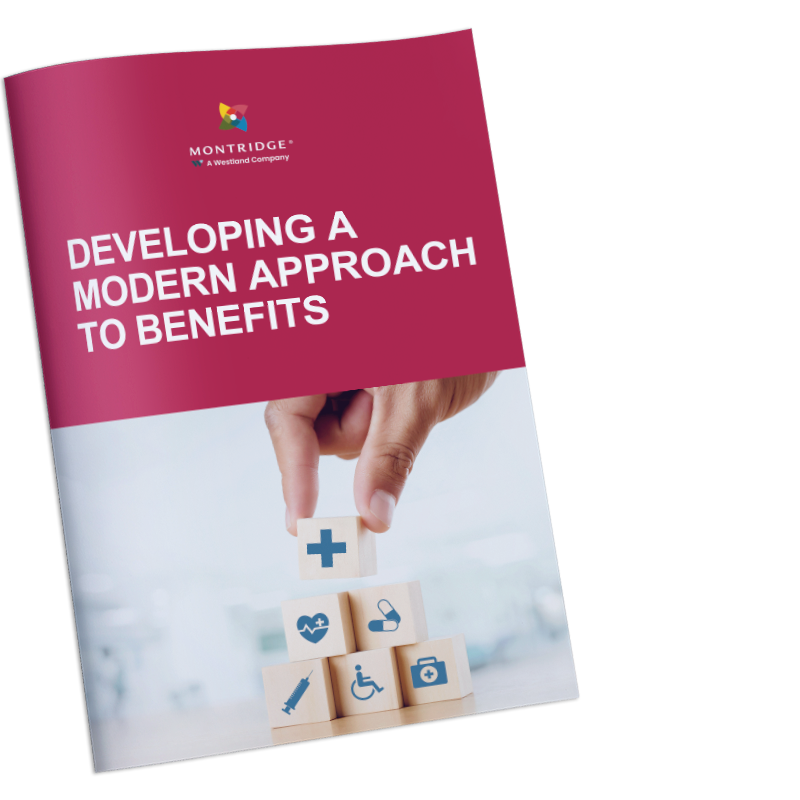In today’s competitive labour market, employee benefits are no longer optional—they’re essential for attracting and retaining top talent. Your employees want benefits that are personalized, inclusive, and sustainable, and staying ahead of legislative changes and emerging trends is key to remaining a top choice. This guide explores the employee benefits trends and challenges shaping 2025 in Canada and how you can adapt to thrive.
Legislative Updates Impacting Employee Benefits
What the Canadian Dental Care Plan Means for You
In 2024, the Canadian Dental Care Plan (CDCP) was introduced, providing millions of Canadians with subsidized dental services. While this initiative expanded access to care, it has notable limitations. Eligibility depends on factors such as age, disability status, and income. Coverage, although robust in some areas, still falls short compared to many private plans. Not all dentists are enrolled, and coverage gaps remain compared to private plans. For most organizations, these limitations mean the CDCP will likely have minimal impact on your dental benefits offerings in 2025.
Looking Ahead: National Pharmacare
The potential rollout of a National Pharmacare Program in 2025 could redefine how you approach drug benefits. If fully funded, it may significantly lower your costs, allowing you to reinvest in high-demand benefits like financial wellness tools or advanced health technologies.
To stay competitive, you’ll need to review your plans regularly, ensure compliance, and make strategic adjustments that align with employee needs and your business goals.
7 Emerging Employee Benefits Trends for 2025
1. Personalizing Benefits Programs and Utilizing Digital Health Tools
Your workforce expects benefits tailored to their needs. Customizable portals let employees choose options like enhanced mental health support, retirement plans, or wellness perks. Digital tools like virtual care platforms and AI-driven health recommendations add flexibility and accessibility, boosting engagement and satisfaction.
2. Aligning Benefits with ESG Goals
Sustainability and social responsibility are more than buzzwords—they’re priorities for many employers in 2025. You can also demonstrate your commitment by offering the following:
- Subsidized green commuting options.
- Eco-friendly wellness initiatives like virtual fitness programs.
- Community-focused perks such as volunteer days or matching charitable donations.
3. Expanding Mental Health Support
Mental health resources are evolving beyond traditional Employee Assistance Programs (EAPs). Your employees will value access to:
- In-person and virtual therapy sessions.
- Digital cognitive behavioural therapy (CBT) tools.
- Mindfulness and stress management apps.
- Peer support groups or group coaching programs.
Investing in mental health initiatives not only enhances employee well-being but also leads to higher retention rates, reduced absenteeism, and improved productivity.
4. Focusing on Financial Wellness
Did you know that rising inflation and economic uncertainty are your team's top concerns? The 2024 HOOPP survey illustrates how Canadians are struggling with retirement readiness.
Help them take control of their finances with programs that empower employees to manage their financial health, such as:
- Group RRSPs and employer-matched savings plans to help them save for retirement.
- Workshops and one-on-one financial counselling for managing their debts.
- Budgeting apps and planning tools which help them create long-term financial security.
5. Supporting Chronic Disease Management
Chronic conditions like diabetes and hypertension are increasingly common. Address these with programs like:
- Health coaching programs tailored to managing specific conditions.
- Coverage for routine screenings and preventative care.
- On-site or virtual health consultations for personalized guidance.
Remember, investing in chronic disease management reduces long-term healthcare costs.
6. Offering Smoking Cessation Support
After years of existing smoking cessation programs remain highly sought-after. Support your employees with:
- Access to counselling or support groups.
- Subsidies for nicotine replacement therapies.
- Digital tools and apps designed to help employees quit smoking.
All this will lead to better health outcomes and lower absenteeism.
7. Leveraging Technology
Technology streamlines benefits delivery and management. AI-driven tools tailor offerings, analytics track engagement, and virtual care platforms make healthcare more accessible. By embracing these tools, you can improve satisfaction while optimizing ROI.
3 Main Challenges for Employee Benefits Professionals in 2025
1. Rising Costs of Benefits Programs
The cost of benefits programs continues to rise, driven by increasing healthcare expenses and growing employee expectations. To manage these costs while maintaining a competitive edge, you can adopt strategies like:
- Voluntary benefits: Allowing employees to opt into supplemental coverage at their own expense.
- Tiered healthcare plans: Offering different levels of coverage to meet varying needs.
- Cost-sharing models: Asking employees to contribute to premiums for specific benefits.
2. Balancing Flexibility with Compliance
Your employees value flexibility, but it must be balanced with regulatory compliance. This is especially true with changing legislation. Regular reviews and guidance from experienced advisors who understand the compliance landscape can help you strike the right balance.
3. Meeting the Needs of a Multigenerational Workforce
Workplaces today are more multigenerational than ever, with Baby Boomers, Gen X, Millennials, and Gen Z all contributing to the workforce. Each generation has unique priorities, requiring benefits strategies that address diverse needs.
- Younger employees tend to prioritize flexibility, tuition repayment programs, and wellness perks.
- Older employees often focus on retirement planning, chronic disease management, and smoking cessation support.
Recognizing this and aligning your programs to these diverse needs fosters inclusivity and engagement.
Practical Takeaways for Employers
- Offer customization: Use benefits portals to give employees choices, boosting satisfaction.
- Review regularly: Stay ahead of trends with proactive plan updates and resource reallocation.
- Embrace technology: Streamline benefits delivery with tools that enhance efficiency and engagement.
- Leverage expertise: Work with advisors to navigate legislative changes and optimize costs.
By prioritizing flexibility, personalization, and proactive strategies, you can stay ahead in 2025’s evolving landscape. Montridge Advisory can help you navigate challenges with innovative solutions tailored to your goals. Let’s build a benefits strategy that empowers your team and drives your success.








